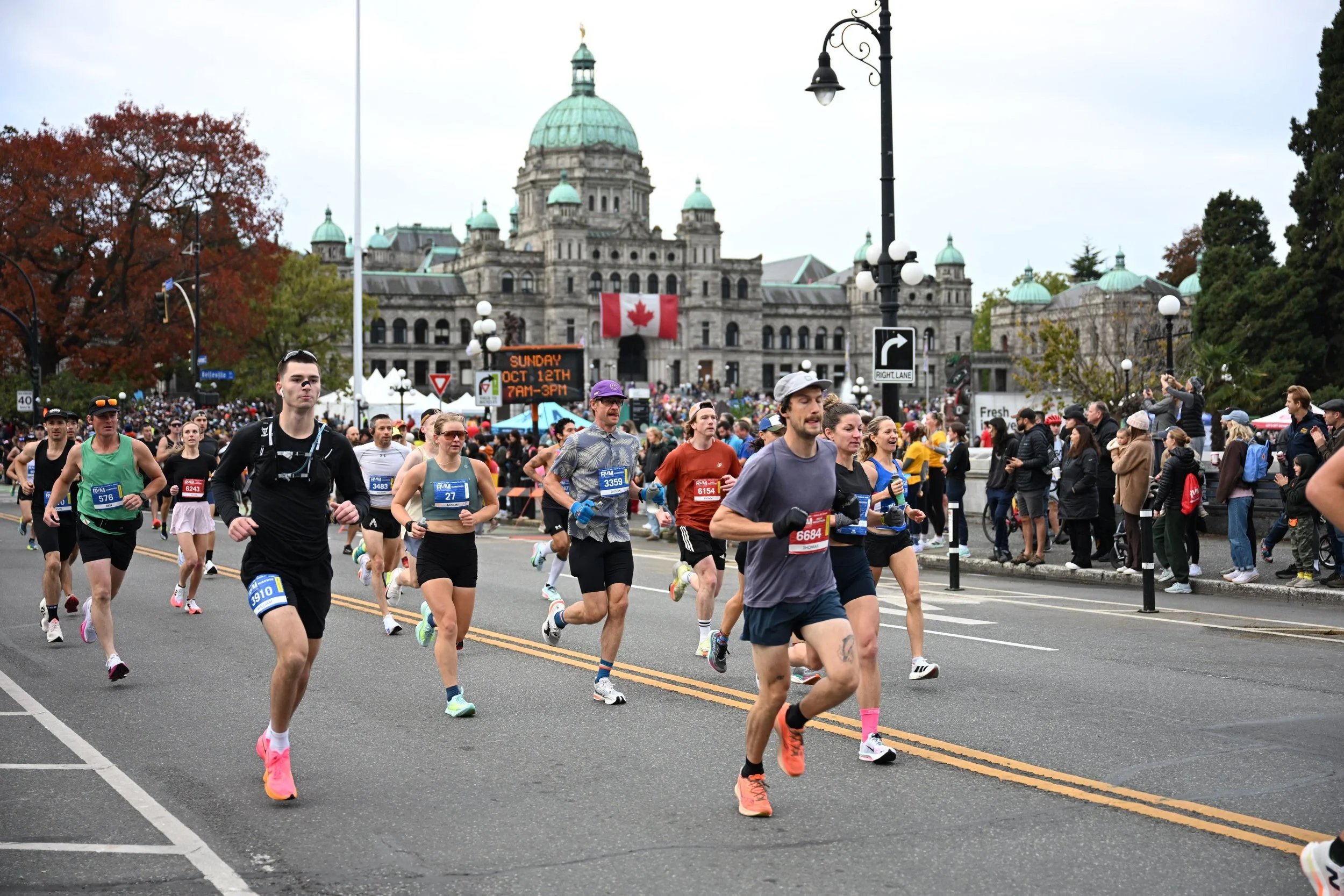How long does it really take to train for a marathon?
You’ve all seen online training programs that advertise “12-week marathon training plan” or something similar, give or take a few weeks on either end. Sure, those plans can be immensely valuable and help you complete a marathon. But in order to get the best out of yourself, achieve big goals, and feel strong for the entirety of 42.2km, there’s a lot of work that needs to be done prior to the standard 12-week training plan.
Building up your base for several months (and eventually years) all contributes to your aerobic fitness, which is the basis of what running a marathon is. Having more aerobic volume in your training directly correlates to delayed fatigue onset in the marathon, specifically in the later stages. People often refer to this as the time they “hit the wall” of bonk. Think of the marathon in two halves, with the first half being 32km and the second half being 10km. Why? Because that last 10km is equally as hard, if not harder, than the first 32km. With more aerobic volume in your training, you’re less likely to experience this extreme decline (along with proper fueling and pacing).
In order to safely run high mileage during the 12-week marathon training block, you need to be building up your mileage for months before otherwise you’ll risk injury. The time to build mileage is before the marathon block starts. Once the marathon block starts, you can integrate marathon specific training like pacework, long runs, etc.
Increasing aerobic volume is nothing glamorous. It’s showing up consistently, even through the cold months of winter. It’s listening to your body and actually running your easy runs at an easy pace. It’s running the same number of days (approximately) per week. It’s gradually increasing your mileage. It’s staying healthy and integrating strength training. It’s a lot of easy miles with a little bit of speed sprinkled in the mix. It’s learning how to (or dialling in) fuel properly on long runs. It’s building a base.
The moral of the story? Training for a spring marathon starts now. It starts in the dead cold of winter. It builds resilience and routine. It sets you up for success.
